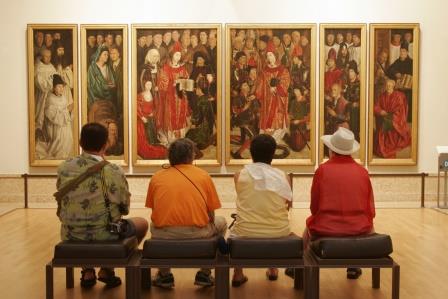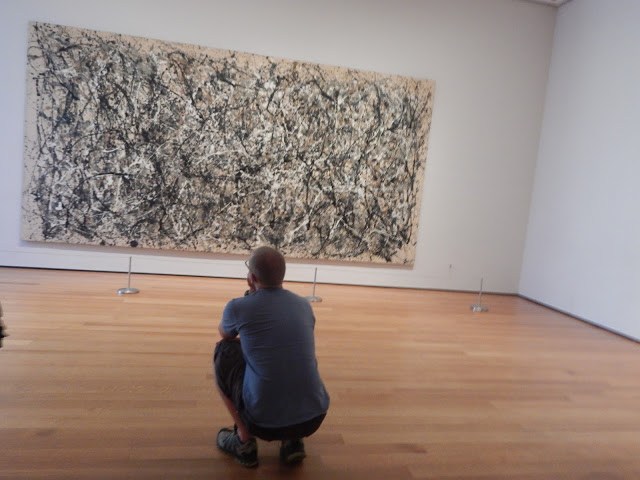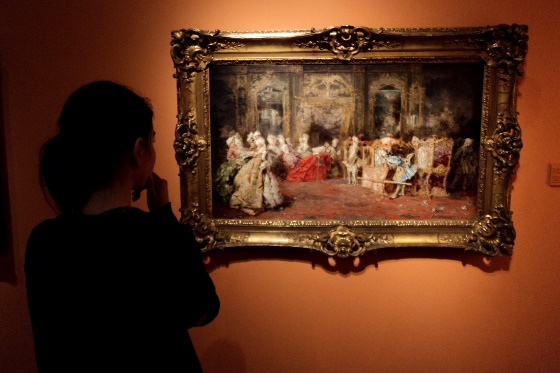First Words About the Course
Visiting a museum or an art gallery is an activity that most people have experienced at least once in their lifetime. In these environments, there is a permanent cultural dialogue about art, based on each exhibition.
The exhibition of a work of art is an activity that requires care and hard work. Working with art requires very extensive knowledge of management, logistics, and preservation actions.
Museu Nacional de Arte Antiga, Lisbon, Portugal.
But what is an exhibition?
The art exhibition is understood as “the public exhibition of objects arranged with the objective of communicating a concept or an interpretation of reality. It can be permanent, temporary, or itinerant.”
It is, first of all, a medium of communication.
When the public visits an exhibition, he can certainly ignore all the work that anticipates what he is being invited to see.
The viewer does not need to know the insurance value paid on a work of art that left America for an exhibition in Europe, nor understand how each painting or sculpture was chosen to be there. This knowledge is the responsibility of those who curate and organize an exhibition. It is this person – or more generally a group of people – who must have knowledge of each stage of the exhibition process, from beginning to end.
We talk about museums and galleries when we think about exhibitions because traditionally they are the places associated with this kind of activity. However, as you will be able to verify during our course, the semantic and aesthetic boundaries are questioned today. We can even consider the internet as an exhibition space.
Cafes, restaurants, schools, and companies can also be an exhibition space for works of art. Everything depends on what you expect to exhibit, how you intend to exhibit, what your goals are, and the way to meditate.
In any case, an exhibition involves a considerable number of people and tasks. First of all, the concept of an exhibition needs to be well justified.
An exhibition needs to have an objective, which can be from the sale of the works of art to the presentation of artists, or cultural access. There are several objectives and each event must have its own.
Curation is one of the most delicate aspects of setting up an exhibition.
The curatorship of works of art is basically the process of choosing what will be exhibited. This stage also involves the maintenance and preservation of the selected collection/
MoMA, EUA. https://www.junypelomundo.com.br/2016/11/projeto-fotografico-museus-pelo-mundo.html
Every detail needs to be planned and organized in advance so that the objective can be fully accomplished. These will be the themes of the course.
The assembly of an exhibition is, first of all, a work of cultural mediation. This means that it goes through the educational sector. When you organize and exhibit works of art in a certain environment, you are committing yourself to the cultural education of a number of people, who may be accessing that space for the first time.
This is serious and important, and further increases the curator’s responsibility.
It is also important to mention that, although this is not a history course, we will analyze important exhibitions, such as the Impressionists’ exhibition and the week of modern art (1922), in Brazil. This knowledge is important because it leads us to perceive an exhibition as a historical event, a milestone, and we can ask ourselves what these exhibitions had that was so impressive.
Another point to be analyzed will be the most controversial exhibitions in history, such as the one that propagated degenerate art, which happened in Germany, idealized by the Nazis, and recently the Queer Museum, an exhibition that created controversy in Brazil.
Analyzing, understanding, and reflecting on these events is important because it brings the exhibition from a place that is only aesthetic and makes us note how it can also be a political activity, for example.
Cultural legislation, preservation of cultural assets, among others, will also be discussed here.
Museu Nacional de Belas Artes in Buenos Aires, Argentina.
This course presents practical and theoretical situations in the following dimensions:
- Aesthetic
- Cultural
- Educational
- Politic
- Economic
We hope you enjoy the course. You can contact us, in case of any difficulty, doubt or suggestions.


